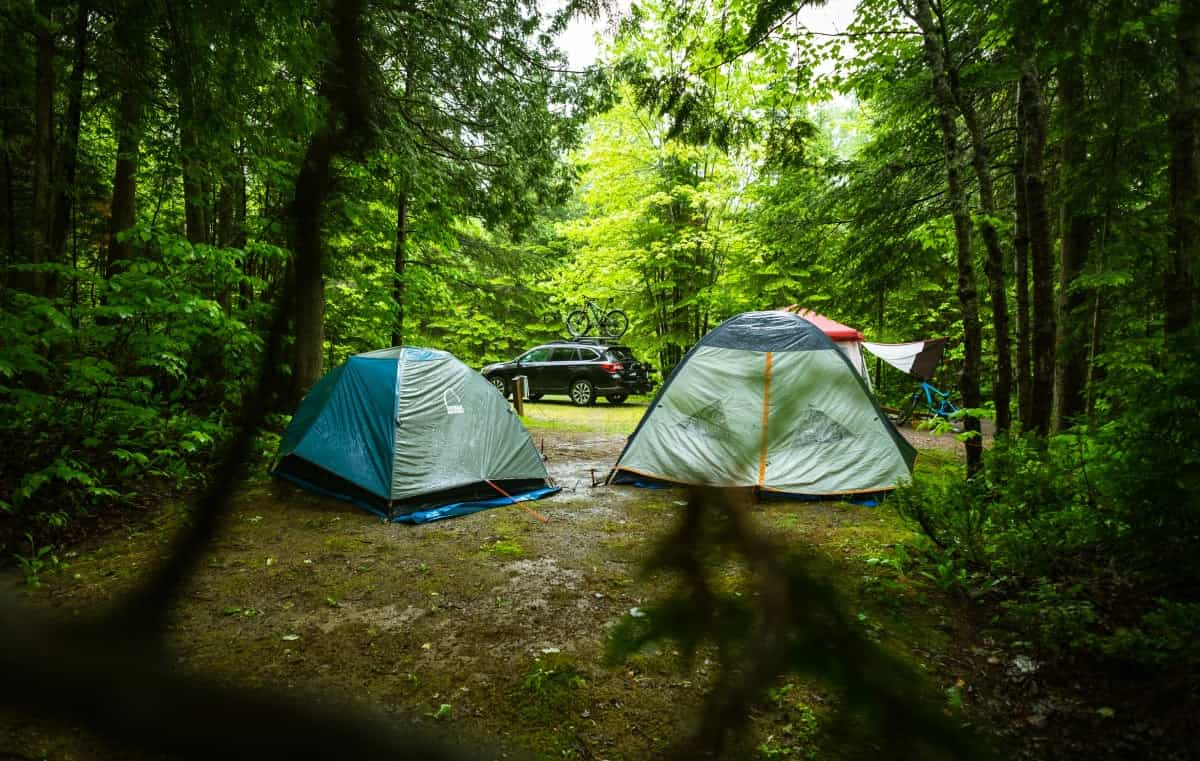Why do tents leak?
Puddles, drips and wet toes probably aren’t the first things that spring to mind when you imagine a feelgood camping holiday. However, when you’re living and sleeping outdoors with just canvas to separate you from the elements, leaks can often appear – seemingly from nowhere.
If you’re tired of drips interrupting your peaceful slumbers or you’re not quite sure what’s causing that puddle in the corner, this guide will cover all the different things that could be causing your tent to leak and suggest some simple steps you can take to patch up your water problem for good.

Is it condensation or a leaking tent?
Condensation is very common in tents, especially in the morning, because humans expel moisture during the night simply through breathing. This moisture gathers in the air and latches onto the surfaces of the tent, which are cooler, forming condensation that can often be mistaken for a drip or a leak from your roof.
Condensation will often trickle down your tent walls and form a few puddles here and there, but if you notice that your puddle is in one place and it grows and grows the more it rains, then you probably have a bigger problem: a leak.
What causes a tent to leak?
1. There’s a hole in your tent.
The obvious culprit might be a hole or damage to your tent caused by accidents, animals or sharp objects. Usually, it’ll be quite easy to find the source by examining your tent closely.
2. Your tent has leaky seams.
A fault in the seams of your tent makes it easier for water to find its way into your tent, so checking out the stitching will help to rule out this problem.
3. Your polyurethane waterproofing coating needs updating.
Age, harsh elements and even strong detergents can wear down your tent’s fabric, making it less effective against the elements. One of these layers is a polyurethane coating that’s present in your flysheets and floors. You’ll be able to tell if it’s beginning to flake away. Handily, it’s easy to sort out by applying a new polyurethane coating yourself.
4. Your tent has a poor Hydrostatic Rating.
Work out how waterproof your tent’s fabric is by looking at its Hydrostatic Rating, which you’ll find in your tent’s specification online or in the manual. While a rating of 1000mm will hold off light rainfall, it might start to leak when a heavier downpour sets in. If there's any chance of heavy rain, you’ll be better equipped with a tent that has a rating over 2000mm.
5. Your kit is touching the tent walls.
Any personal belongings touching the inside of your tent walls are an invitation for water to leak inside. This is because these items create a tunnel-like route for rainwater (also known as capillary action, if you’re looking for the scientific term).
6. You haven’t weathered your tent.
Rather than leaving things up to chance, weathering your tent can protect against unwanted leaks. This is easy to do: simply set up your tent and spray it with water a few times over.
The seams of some tents are made from stitching that absorbs water, so weathering your tent will help the thread to expand and pad out any tiny holes in the stitching. You won’t need to do this for polyester tents, but it’s important for polycotton models, and you’ll only need to do it once before your first camping trip.
Can you fix a tent if it is leaking?
Luckily, it’s easy enough to learn how to repair a tent, whether it’s ripped fabric or a split seam that’s causing the leak. You’ll only need some repair tape, a sewing kit or a seam sealer, depending on the type and tent and the location of the leak.
FAQ
Why do tents leak?
Tents can leak due to holes, faulty seams or a poor Hydrostatic Rating. You might need to update your polyurethane waterproofing coating regularly or weather your tent.
Why do tents leak when touched?
Items touching your tent wall create a tunnel-like route for water to get into your tent, through a process called capillary action.
Is it normal for a tent to leak?
It’s uncommon for a tent to leak, unless it’s damaged. Condensation is often mistaken for a leaky tent, but this is simply water that forms on your tent surface due to the moisture that humans expel when they breathe in and out.